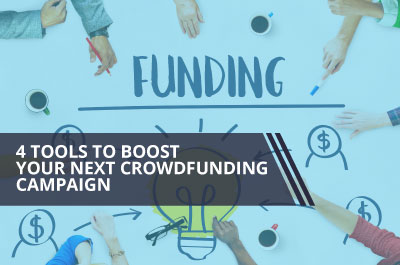This past year has shaken up the efforts of even the most experienced fundraisers. No one could have expected a global pandemic and the resulting mass social distancing guidelines, let alone their effect on how nonprofits connect with supporters and solicit donations.
With most face-to-face interactions paused, nonprofit leaders had to modernize their fundraising efforts and communicate with supporters in creative digital ways. Virtual events have now become the norm, and there’s been a major shift of organizations moving to remote work.
Because of digital advancements like these, nonprofits also saw an increased dependence on management tools and communication tech, as well as the data they produce and collect. As we prepare for 2021, it’s important to remember this: Taking a data-based approach is invaluable and is the best way for nonprofits to reach their supporters in meaningful ways and further their fundraising goals.
Using data to back up your nonprofit strategies and donor engagements has been a reliable method of growing organizations for a while now. Since most of your nonprofit engagements are currently limited to digital communications and other virtual tools, you likely have more data available to you than ever before.
This guide will walk you through some of the most important donor data practices you should follow, especially as you head into this new year. You’ll be exploring the following tips:
- Ensure your donation forms collect key information.
- Use your donor data to create targeted marketing content.
- Regularly analyze your donor data.
- Take necessary steps to protect your donor data.
Donor data is valuable when the methods to obtain it are organized and accurate. This will likely rely on the tools you use, so investing in a dependable online donation tool and nonprofit payment processor is key. Ready to learn more? Let’s begin.
1. Ensure your donation forms collect key information.
To build an arsenal of rich and valuable donor data, you will need a donation form that asks for that information. This seems like a basic tip, but ensuring your donation forms are optimized and collecting the right information is the first step to getting your donor data in tip-top shape.
The donor data that your organization considers relevant will depend on your unique mission, goals, and engagements. For instance, if your organization often hosts ticketed events, a relevant field that you’ll want to include is ticket amount and ticket type. In general, the key information you want your donation form to collect will include:
- Name
- Address
- Email address/Phone number
- Donation amount
- Payment information
Pulled from iATS Payments guide to donation form best practices, here’s an example form that asks for the essentials:
Make sure your online donation form is integrated with your donor database. This way, all of your critical supporter information is directed to centralized and comprehensive donor profiles. Having an integrated nonprofit tech solution is crucial for many reasons, especially to ensure that your data is accurate and can be used for any engagement, like in your marketing efforts.
2. Use your donor data to create targeted marketing.
Now that your donation form is collecting the right donor data, let’s discuss how you can use it. A best practice that you should definitely continue in 2021 is using donor data to create targeted marketing campaigns and content.
According to AccuData’s data marketing guide, “the main benefit of data marketing is the specificity the strategy offers, improving your ROI and the overall success of campaigns.” In simple terms, using data to inform your marketing strategy allows you to focus on high potential supporters as well as create content that is most likely to increase engagement. But how do you do so?
First, look at your donor and fundraising database. Take note of any key spikes in engagement and if a particular marketing campaign caused it. This gives you a clear idea of successful past strategies and what might work again.
You can also use your donor data to learn more about your nonprofit audience. For instance, see if there are any common metrics that your donors share. This could be something like age, location, past engagement type, and more. Then, segment your supporters by these common metrics and create personas for them. This gives you a concrete “target” for any marketing strategies and content that you create.
Let’s use an example: Segment your major donors in your nonprofit database. You might define these supporters as those that donate over $10,000 each year. These individuals respond most positively to personal phone calls and hand-written letters. Using this persona information, draft targeted messages and main points to cover during phone conversations,
This targeted information along with a fundraising appeal will inspire the supporter to give again more so than a generalized email asking for a gift. This way, the recipient is reminded of how much their previous contribution was valued, enticing them to be a part of this high-impact group and give again.
3. Regularly analyze your donor data.
A huge benefit of collecting donor data is its ability to help you improve future processes and optimize nonprofit strategies. That’s why it’s essential that you regularly analyze your donor data.
Using your donor database, compile key reports on relevant metrics and fundraising data in order to track a campaign’s process. This might depend on the type of database you use, but many of them will compile these types of reports for you. For instance, after your organization hosts an event, you should compile reports and analyze key data points from it. Include metrics like many attendees there are, how many of those attendees made an additional gift, and so on.
A good practice to keep is compiling a nonprofit annual report. Not only should you compile data for your team to analyze, but pulling key information into an annual report allows you to distribute insights to your supporters as well. This will summarize your organization’s progress for the year and present it in a visually pleasing and digestible format for supporters and other stakeholders of your mission. This shows them your progress, as well as the goals that you will tackle in the new year.
4. Take necessary steps to protect your donor data.
As your nonprofit expands and takes on additional software solutions, you are able to collect more information through online interactions with supporters. However, this increased transfer of information could also increase your vulnerability to hackers and fraud if you’re not careful.
When someone gives to your organization, they’re submitting sensitive information and financial details all in the name of supporting your cause. They’re putting a lot of trust in your organization. Show that you value this trust and work to keep it by taking the necessary steps to protect donor data.
The top area of concern is likely your online payment tool. It’s critical that you invest in a payment processor that:
- Is PCI compliant
- Has data portability
- Offers 24/7 security assistance
- Has experience with nonprofits
Along with the above, your payment provider should incorporate additional fraud protection tools. Taking some insight from this article on online fraud protection for nonprofits, some common fraud protection tools are an address verification system (AVS), bank identification number (BIN) blocking, and a card verification code requirement (CVV2).
Wrapping Up
Donor data is a valuable resource that all nonprofits and fundraisers should be taking advantage of. Not only does it make your tools and internal processes more efficient and streamlined, but it can also definitely aid your fundraising efforts and donor engagement strategies. As you compile additional donor data, make sure you’re keeping it safe so that you maintain the trust of your supporters and can continue growing, especially as we head into a new year. Good luck!
About the Author: Matt Dunne

Driven by his desire to support numerous charitable causes in his home country of Ireland, Matt joined the iATS Payments Team in March 2016 to leverage his entrepreneurial experience in support of the non-profit industry. He empowers partner organizations to provide impartial, accurate and valuable payments information and knowledge to the Nonprofit community.




